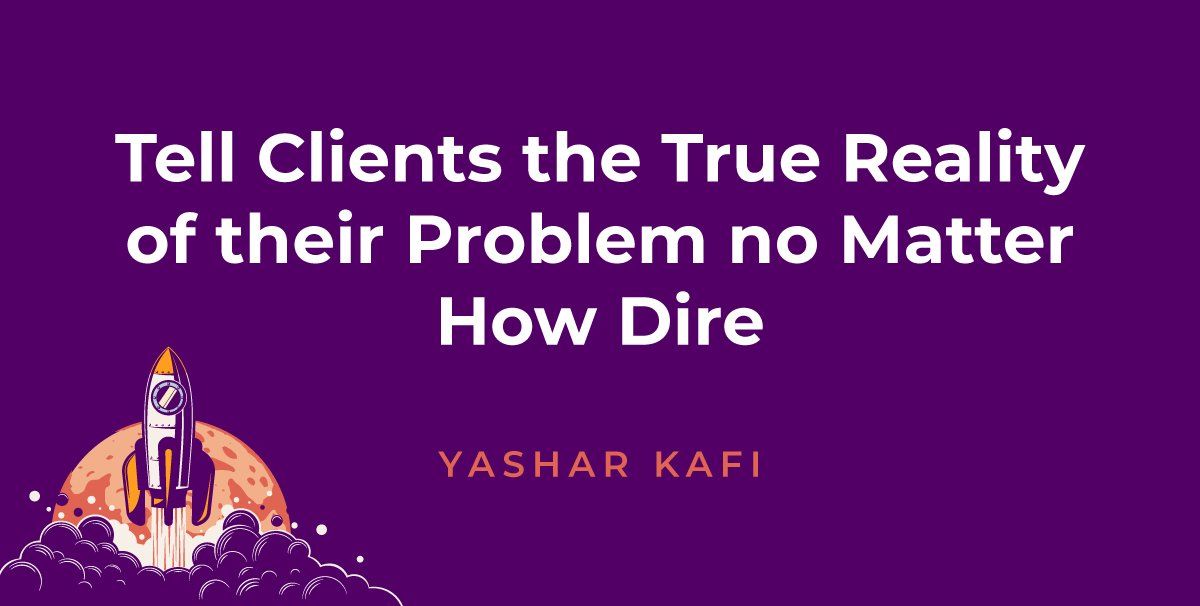Tell Clients the True Reality of their Problem no Matter How Dire
We’ve all heard the phrase “honesty is the best policy,” but what if that honesty leads to uncomfortable situations, or worse? IS honesty always the best policy? I want to take this a step further and specifically address the consulting world with the question along the same lines: Is telling a client the true reality of their problem—no matter how dire—essential, even if it means losing that client by doing so?
While this may seem like a tough question, for me, it is a no-brainer. The answer is a resounding YES. The challenging part comes when navigating how you tell them, then how they might react to the sometimes harsh reality of what that truth uncovers.
Simply put: as a consultant and in any business relationship in the professional realm, you learn quickly that your word IS your reputation. And your reputation? Well, that depends. If it is a good reputation, ensuring that your word holds weight will take you anywhere. If it is a bad reputation, that guarantees that you’re seen as being full of shit and that only leads downhill and to professional exile. After all, no one wants to work with someone they can’t trust to shoot straight with them. Honesty in this industry truly does set you apart from your competition.
Now, you might wonder: But what if you simply don’t tell them everything? As in, you tell them some of the truth of their situation but leave out the more messy and uncomfortable bits. As I’ve always shot straight, I won’t stop now: that is just cowardice and an unwillingness to engage in dialogue that may be difficult. But it’s necessary to truly do your job thoroughly. After all, what are you being hired for if not to help show the way? And how can you help guide the way without relaying where exactly your client is at (and yes, I mean exactly) and where they need to be? The “half-truth” mentality is like you are half-assing your job.
So, why do we do it? Why do we shrink away from just telling it (all) like it is? We often do this to avoid conflict, deflect blame, or simply to take the easy way out and court favor with the client. It is human nature to not want to disappoint people, and yes, we want them to like us and always be pleased with us.
But the reality is, there won’t always be happy news to share, and sometimes, being honest will require being the bearer of bad news. Will the client like hearing it? Definitely not always. Will you lose that client? In some extreme cases, possibly yes. Is it still a stance that should be set in stone for simple good business practices?
In all honesty, yes.
Recent Posts


Recent Posts




